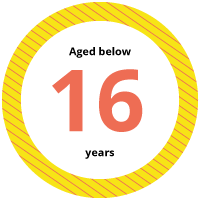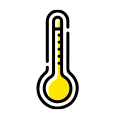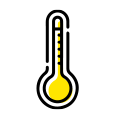Juvenile Idiopathic Arthritis
Juvenile Idiopathic Arthritis
An Overview
Juvenile idiopathic arthritis is a form of arthritis commonly seen in teens and children. It is an autoimmune disease in which the body’s immune cells attack the tissue between the joints, resulting in chronic and prolonged inflammation. This causes discomfort, pain and tenderness in the joints, making mobility and movement more difficult. Prolonged inflammation of this condition will eventually damage the surrounding cartilage and bones.
Risk Factors
 Children aged below 16 years
Children aged below 16 years More common in girls than boys
More common in girls than boysSigns & Symptoms
The following are the symptoms to watch for in order to detect the disease early:
 When the number of affected joints is less than four, it is called oligoarthritis
When the number of affected joints is less than four, it is called oligoarthritis JIA that affects more than four joints is sub-classified as polyarthritis
JIA that affects more than four joints is sub-classified as polyarthritis Systemic JIA affects the whole body with high fever, enlargement of the spleen and liver, and inflammation of membranes covering the lungs and heart
Systemic JIA affects the whole body with high fever, enlargement of the spleen and liver, and inflammation of membranes covering the lungs and heart When arthritis occurs together with psoriatic rash, it is sub-classified as psoriatic arthritis
When arthritis occurs together with psoriatic rash, it is sub-classified as psoriatic arthritis Enthesitis-related arthritis refers to the JIA sub-class where the tendon attachments to the bones are affected, together with the hips and spinal column. This type of JIA occurs more often in boys than girls
Enthesitis-related arthritis refers to the JIA sub-class where the tendon attachments to the bones are affected, together with the hips and spinal column. This type of JIA occurs more often in boys than girls Inflammation of the joints (swelling, redness and pain) that is worse in the morning or after resting
Inflammation of the joints (swelling, redness and pain) that is worse in the morning or after resting Joint stiffness
Joint stiffness Restriction of joint movements
Restriction of joint movements Skin rash
Skin rash Eye redness (inflammation)
Eye redness (inflammation) Fever
Fever Weight loss
Weight loss Weakness
Weakness


